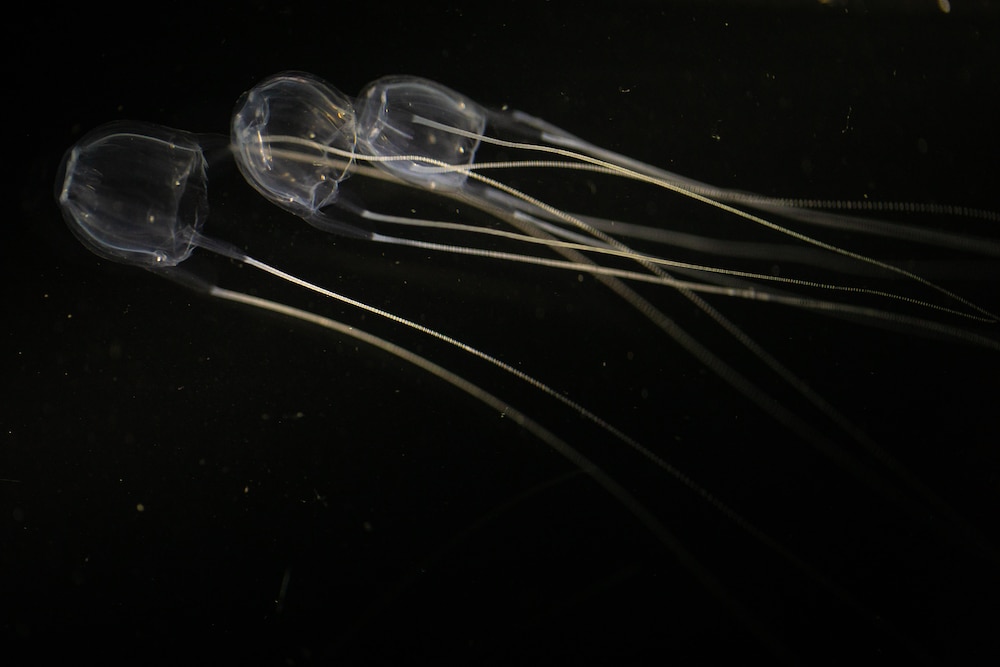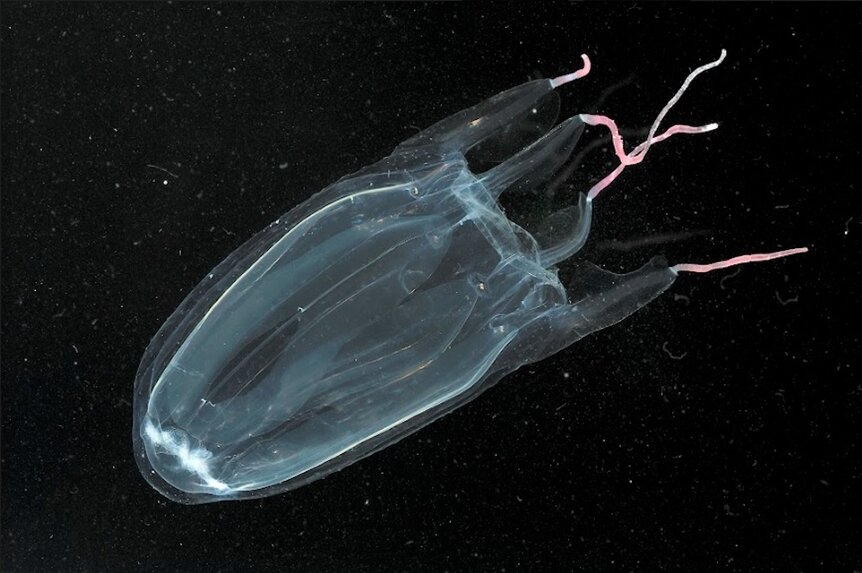Create a free profile to get unlimited access to exclusive videos, sweepstakes, and more!
Box jellies use the Moon to synchronize mass mating ritual
When the Moon hits the sea, and you're a jelly, that's amore!

In 2010, the world was introduced to Megamind, a supervillain with a bulbous head and a heart of gold. Of course, no supervillain is complete without an army of faceless henchmen or, in the case of Megamind, faceless robotic henchjellyfish.
The brainbots, as they are so called, assist Megamind with whatever he needs done including, eventually, saving the city and becoming the hero he was always meant to be. Jellyfish might seem a strange model for intelligent robots. They are generally considered among the least intelligent animals on the planet, but that may not be the case.
A new study, carried out by Angel Yanagihara, associate professor from the Laboratory of Neuroscience at the University of Hawai’i Mānoa, and colleagues, reveals surprisingly complex behavior in a species of box jellyfish. Their findings were published in the journal Regional Studies in Marine Science.
Professor Yanagihara first became interested in box jellyfish after being stung in 1997 and has since spent 25 years studying these animals to uncover what makes them tick. “At the time, I knew nothing about these animals, but that got me very curious,” Yanagihara told SYFY WIRE.
For several decades, scientists and residents of Hawaii have noticed regular periodic migrations of box jellyfish which end in mass congregations in the shallow coastal waters, with many individuals washing up on shore. Those gatherings happen every month at the same time in the lunar cycle, roughly 8 to 10 days after the full moon.
While studying thousands of box jellyfish who had washed up on shore, scientists confirmed that each animal was actively in the process of reproducing, lending support to the idea that these mass shoreward migrations are part of the box jellyfish’s mating cycle.
“It isn’t unprecedented for spawning behaviors to be timed to lunar cycles and lunar events. A lot of marine animals, vertebrates and invertebrates alike, respond to these sorts of celestial happenings,” Yanagihara said.
Worldwide, there are more than 40 species of box jellyfish, each of which exhibits different behaviors, life cycles, and preferred habitats. Only Alatina alata — which lives near the Hawaiian Islands — displays this monthly migration behavior which brings them alternately closer and farther away from the shore along a periodic cycle.
Researchers suspect that the lunar cycle triggers reproductive maturation in adult box jellies and it’s that maturation which then triggers migrations toward the shallow reefs near shore, where they mate. To find out, the team spent months at sea, observing the box jellies to quantify their movements. Over a period of three months, they confirmed that A. alata would swim together in large groups, distances exceeding a mile, in order to reach the shore. Moreover, this migration appears to be initiated by a period of hours between the setting of the Sun and the rising of the Moon, when the sky is darkest.
Precisely how the box jellyfish perceive the lunar cycle and use it to coordinate their movements is unclear, but we do know that they are smarter than most people give them credit for. Contrary to popular belief, box jellyfish aren’t just vacant bags of mostly water. They actually have a complex visual system which they use to hunt.
“They have these absolutely remarkable visual [apparatuses]. They have four eyestalks that stick into the inside of the body from each of the flat sides, which can move around. On each eyestalk are two eyes similar to our own, with an iris and a retina capable of color vision. One is directed down and forward while the other is straight up. Alongside those eight eyes, they have visual pigment cells that detect light and darkness. Altogether, they have 24 eyes,” Yanagihara said.
We don’t have a clear understanding of how this visual information is processed — as far as we can tell, box jellyfish don’t have any brain — but they do use their eyes to successfully hunt, so it seems apparent that they’re making use of visual stimuli in some fashion or other.
That makes a sort of sense. Evolution isn’t typically in the business of building complex structures without any survival payoff. It seems unlikely box jellyfish would be teeming with eyes if those organs weren’t earning their keep.
There are plenty of open questions centering on how and why box jellyfish achieve these impressive collective migrations and scientists hope to continue studying and learning about these surprisingly complex animals.
The more we think about it, maybe they would make good henchcreatures, after all.



























